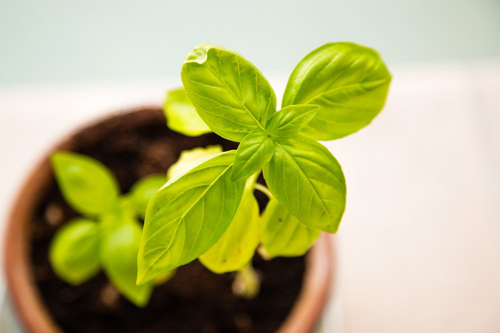Cook Up Something Great – Herbs Every Gourmet Needs
Why look any farther for fresh flavors than your very own garden? A culinary garden can be the ultimate inspiration for budding cooks and gourmet chefs alike. Like any recipe, start your kitchen garden with the basics. Think light, placement, planning. Place plants of similar size and water needs together, for example. You wouldn’t want your woody rosemary to crowd out your herbaceous chives. More tips to get you cooking…
5 Cardinal Rules of Culinary Gardens
Location, location, location: Close to the kitchen, not to close for aesthetics. You want your culinary garden to be close enough to cut quickly. But remember, you’ll be cutting your herbs often, so the plants might not be the prettiest. If it will bother you to have cut-back plants as your first view out the door, rethink placement.
Shoot for the sun: By and large, herbs hanker for the sun. Choosing a sunny locale gives you the best chance for overall success with your culinary garden. Added to that, they just taste better, with more nutrients and richer colors that add up to better flavor.
Flowers begone!: When herbs flower, their leaves tend to grow bitter. After that it’s unlikely to go back to producing leaves. The best strategy? Every four to six weeks in season, plant new plants.
Prune your evergreens: Sage, thyme, rosemary… these are the evergreen herbs, and as such they’ll need care and attention. If you aren’t cutting them regularly, you’ll notice branches that appear dead or dormant. Prune them at least once a year (spring or fall).
Beware the mint!: If you insist on mint, whatever you do, don’t put it in the garden. Contain it in the pot of your choice, and keep it there. Invasive beyond a fault, mint will spread vigorously, choking out anything in its path. Space plants at least 12 to 18 inches apart.
Wondering what to include in your culinary garden? A few of our favorites (three or four plants of each should do it, except bigger woody plants like rosemary-one can produce for years):
Oregano – a staple in pastas, pizzas and stews
Nasturtium – flowers and leaves alike add a peppery kick to salads and other dishes
Basil – sweet or lettuce leaf, vital for pestos and versatile enough to do double duty
Argula – the mother of mixed greens, bringing flavor and spice to salads
Sweet marjoram – a tasty take on Greek oregano and an excellent accent in soups, eggs and butters
The Author:
Think you have your recipe for success set? Fill your cart with our hearty herb selection. Questions? Visit us at SantaRosaGardens.com.
